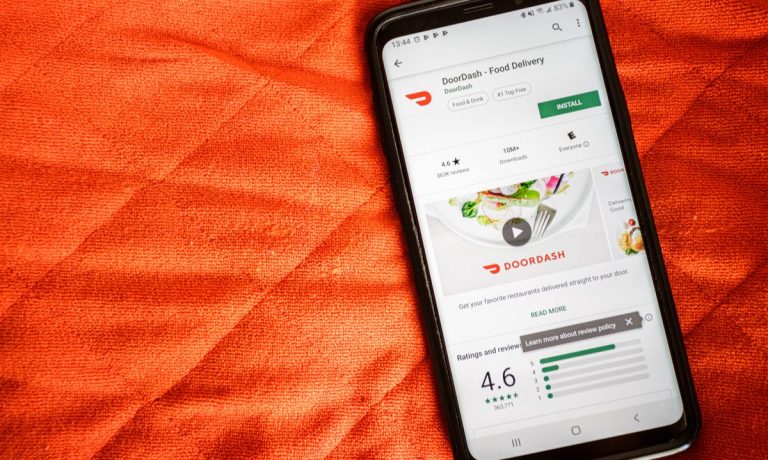
DoorDash is leveraging contextual commerce to embed the purchasing experience more seamlessly into consumers’ daily routines.
The San Francisco, California-based food delivery giant announced in a Tuesday (Feb. 22) press release that it is integrating its Storefront online ordering product with Order with Google, which allows consumers to order directly through Search and Maps.
“Restaurants using Storefront already enjoy an average of 26% more incremental sales,” said DoorDash Chief Revenue Officer Tom Pickett in the release. “The integration with Order with Google amplifies this impact by driving even more commission-free orders to the restaurant’s own channels. Customers are already searching on Google to learn more about a restaurant, and this integration helps restaurants grow their online business even further by streamlining the ordering experience.”
Consumers can order by clicking the “order online” button on the establishment’s Google Business Profile, opting for delivery or for pickup. The sale goes through the restaurant’s existing point-of-sale (POS) system.
The integration allows DoorDash to build on its value proposition, maximizing its advantage over restaurants’ direct ordering channels by promising an even more convenient experience. According to data from PYMNTS’ new Restaurant Friction Index, created collaboration with restaurant and convenience store Software-as-a-Service (SaaS) customer experience management solutions provider Paytronix, the most common reason consumers report for opting to use aggregators is the ease and convenience of the channel.
Read more: How Eateries Can Tap Order Throttling Tools as Delivery Demand Grows
Back in May, Paytronix announced its own partnership with Google to integrate ordering functionality into Search and Maps.
See more: Paytronix Integrates With Google for Easier Food Ordering
“When you add [ordering with Google], we see a 10% uptick in orders that are coming through, and it’s about $507 a month for restaurants in increased order flow,” Paytronix CEO Andrew Robbins told PYMNTS’ Karen Webster in a January interview. “Payment’s easier because it’s tied to Google Pay, and so the experience is going to be click-click. The credit card is saved … Every time you reduce a page, you make the checkout fewer form entries, you get higher conversion, and that’s what we’re seeing.”
Read more: Restaurants Lean on Loyal Customers to Navigate Omicron, Inflation Impact
The integration could be a valuable adoption channel for restaurants, allowing them to reach a significant share of consumers, according to data from PYMNTS’ new study “Digital Divide: Restaurant Subscribers And Loyalty Programs,” a PYMNTS and Paytronix collaboration, which drew from a census-balanced survey of more than 2,000 U.S. adults.
See more: Four in 10 Consumers Open to Restaurant Subscription Services
The study noted that about one in five consumers report that they would be encouraged to patronize a given restaurant if it offered multiple ordering options. Additionally, 13% would be similarly encouraged to purchase from a table-service restaurant if it offered an easy-to-navigate app or website, and 18% said the same of purchasing from a quick-service restaurant (QSR).